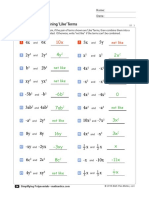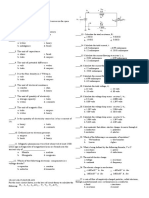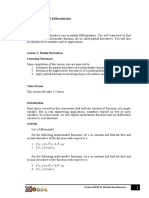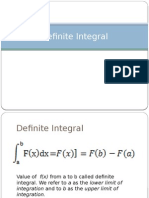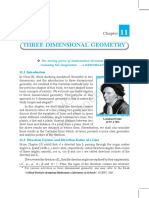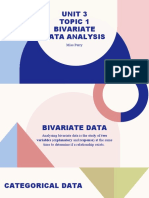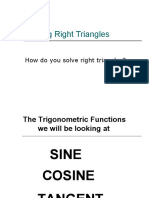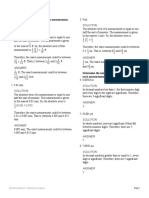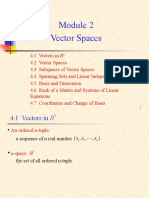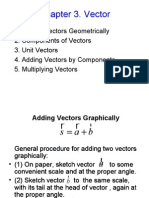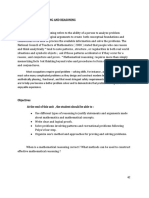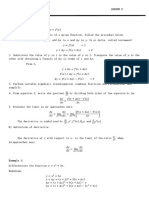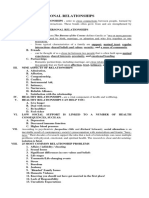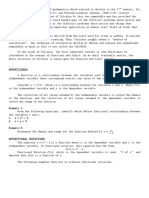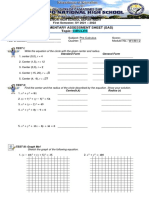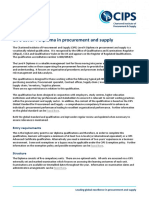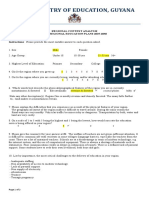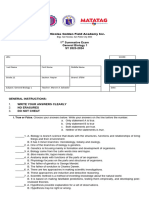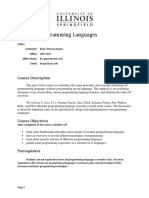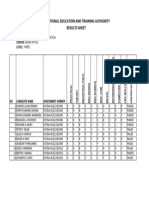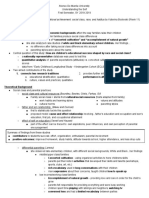0% found this document useful (0 votes)
276 views30 pagesLecture Notes On Inductive and Deductive Reasonings
This document discusses inductive reasoning, deductive reasoning, and problem solving with patterns. It provides examples of each type of reasoning. Inductive reasoning uses specific examples to derive a general conclusion, while deductive reasoning applies general rules to reach a specific conclusion. Examples demonstrate making conjectures based on patterns in data sets and determining whether arguments are inductive or deductive.
Uploaded by
John Asher Josh AguinilloCopyright
© © All Rights Reserved
We take content rights seriously. If you suspect this is your content, claim it here.
Available Formats
Download as PDF, TXT or read online on Scribd
0% found this document useful (0 votes)
276 views30 pagesLecture Notes On Inductive and Deductive Reasonings
This document discusses inductive reasoning, deductive reasoning, and problem solving with patterns. It provides examples of each type of reasoning. Inductive reasoning uses specific examples to derive a general conclusion, while deductive reasoning applies general rules to reach a specific conclusion. Examples demonstrate making conjectures based on patterns in data sets and determining whether arguments are inductive or deductive.
Uploaded by
John Asher Josh AguinilloCopyright
© © All Rights Reserved
We take content rights seriously. If you suspect this is your content, claim it here.
Available Formats
Download as PDF, TXT or read online on Scribd
/ 30



